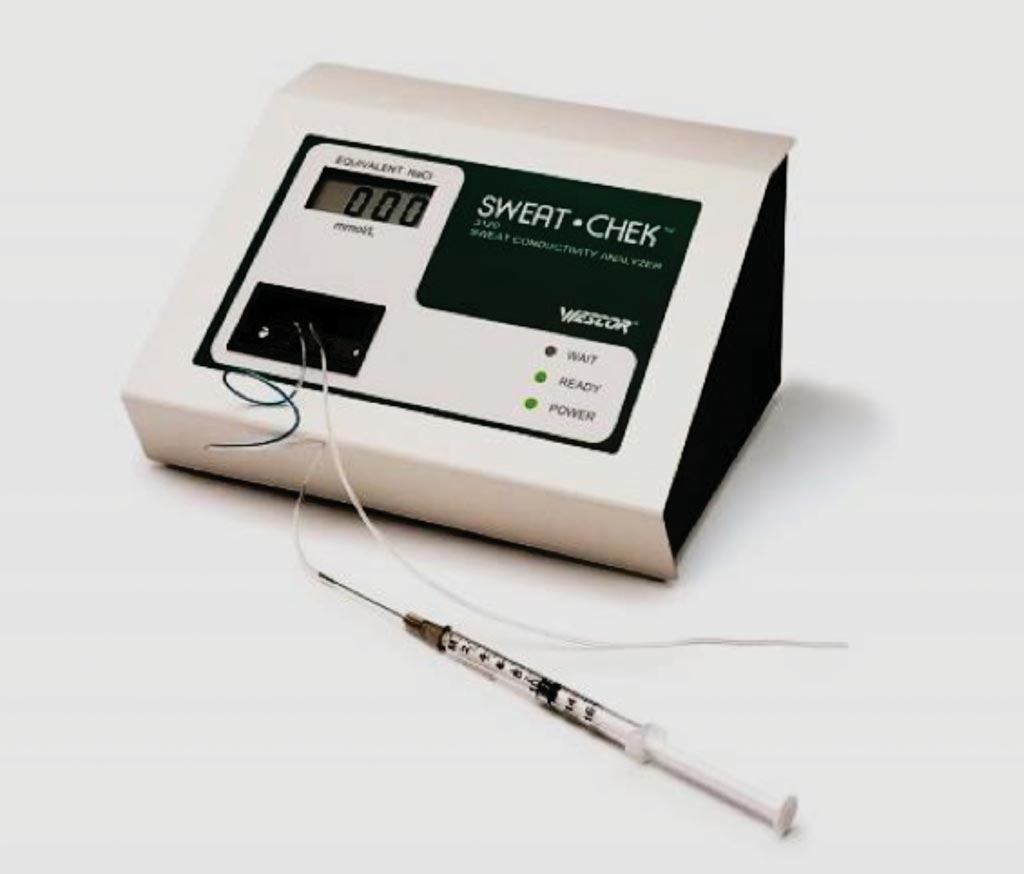Biomarkers Lead to Better Prognosis for CF Patients
By LabMedica International staff writers
Posted on 16 Aug 2017
Cystic fibrosis is a life-shortening and multi-organ autosomal recessive disease characterized by pancreatic insufficiency and recurrent lung infections that contribute to growth failure and progressive respiratory dysfunction.Posted on 16 Aug 2017
The sweat chloride test remains the gold standard for confirmatory diagnosis of cystic fibrosis (CF) in support of universal newborn screening programs. However, it provides ambiguous results for intermediate sweat chloride cases while not reflecting disease progression.

Image: The Wescor Sweat Check Analyzer Model 3120 for total electrolyte analysis of sweat samples (Photo courtesy of ELITech Group).
Scientists at McMaster University (Hamilton, ON, Canada) obtained, residual sweat samples from first time/screen positive CF infants following standardized Pilocapine stimulated sweat chloride testing, excluding samples with intermediate chloride levels (30 -59 mmol/L). In most cases, a 5-μL aliquot was typically used for sweat metabolomic studies. Samples were transferred to a 0.5 mL centrifuge tube and stored in a refrigerator at +4 °C. An aliquot was taken for chloride analysis by chloridometer, the Wescor Sweat Check Model 3120.
Non-targeted metabolite profiling was performed using an Agilent 7100 capillary electrophoresis (CE ) instrument and an Agilent 6550 quadrupole time of flight (QTOF) mass spectrometer equipped with a dual jet stream electrospray ion source (dual AJS ESI) with ion funnel technology. The team identified several unknown chemicals beyond chloride that were consistently associated with babies who had CF, including two different drug and environmental compounds the infants secreted in sweat at much lower concentration levels.
Amino acids, organic acids, amino acid derivatives, dipeptides, purine derivatives, and unknown exogenous compounds were identified in sweat when using high resolution tandem mass spectrometry, including metabolites associated with affected yet asymptomatic CF infants, such as asparagine and glutamine. Unexpectedly, metabolites of pilocarpine, used to stimulate sweat secretion, pilocarpic acid, and a plasticizer metabolite from environmental exposure, mono(2-ethylhexyl)phthalic acid, were secreted in the sweat of CF infants at significantly lower concentrations relative to unaffected CF screen-positive controls.
Philip Britz-McKibbin, PhD, a professor and lead author of the study said, “There are chemical signatures in sweat that tell us an infant has CF. We set out to discover whether there were chemical indicators detected in sweat that could complement the gold standard for CF diagnosis: the sweat chloride test.” The study was published on July 31, 2017, in the journal ACS Central Science.













